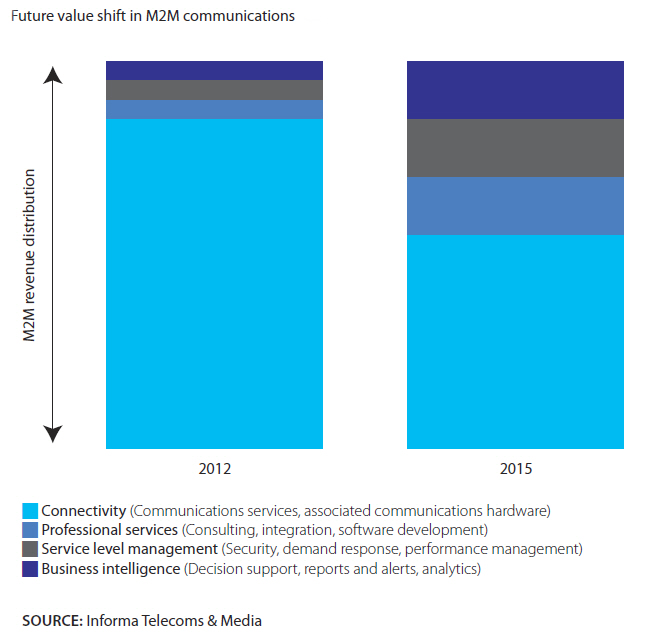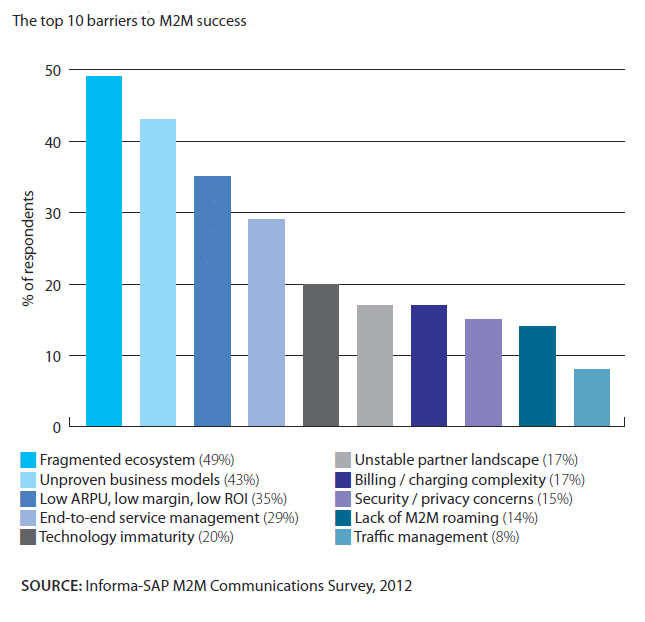M2M – machine-to-machine – is all about a now vital technology, especially when viewed from the perspective of wireless and mobile technology, an area we happen to be intimately familiar with, having covered the mobile realm for well over a decade.
M2M is at a critical point in its existence, but we believe it has moved beyond evolution. In fact, we consider it a transcendent moment in time for M2M.
What does transcendent mean exactly? It can mean "Beyond or above the range of normal,” or merely physical human experience, as in, for example, a transcendent level of knowledge.
More simply and directly, it means "Surpassing the ordinary or being exceptional."
But it's also more than that. Let's turn to part of a quote by John Milton (it's always useful to apply 17th century quotes to 21st century technology): "…those transcendent moments of awe that change forever how we experience life and the world." That gets very close to what it means for M2M to be transcendent as far as we're concerned. It's what makes M2M especially worthy of its other means of identification: The Internet of Things (IoT).
That sounds quite Godlike and all-encompassing in its way…or transcendent.
What's the purpose of M2M? Its essential purpose today, as we close out 2012, is to create simple but vast channels of communications and real-time data, gathering what we all hope will enhance our everyday lives. This will be done with enormous collections of wireless sensors and embedded mobile devices that will see, listen, feel, measure, aggregate and report all manner of information, 24/7, more or less non-stop.
Much of this will happen automatically and behind the scenes, and won't involve any human interactions whatsoever. But in some cases, those devices will engage and interact with us as well – something that will grow over the next several years to become far more substantial than is the case today.
Over the next several years, we’ll be able to gather data that was formerly difficult to collect and aggregate. This is the essence of M2M today as we move full speed ahead in 2013.
To date, the key challenge has been to establish reliable communications and connectivity between mostly wireless devices, and to get that wireless data transported from widely dispersed edges, where M2M data is typically gathered, back to central locations where that data can be monitored and acted upon.
M2M today already helps to automate numerous decisions and tasks: restock a soft drink machine or instantly diagnose a fault in or handle an alert from a machine for example.
With the right software and the right collections of sensors, we can also find the best routes for transportation based on cargo and type of travel vehicle, or more human related things such as being able to anticipate a heart attack or a possible stroke. Wearable technology will, in great part, have a significant M2M component to it – look for wearable tech to be a key driver of M2M from a personal – rather than a remote sensor – perspective.
Rumors of an Apple iOS "watch" with a 1.5 inch screen are currently in play for 2013. Imagine the possibilities for M2M and wearable tech from that perspective.
Where We're Headed
Tomorrow, and certainly by 2015, we anticipate an inevitable shift to what end users – from both the pure consumer and the enterprise side – want to do with M2M. During a recent conversation we had with Oliver Bussmann, SAP's Global CIO (these days much more a strategic thinker for SAP than anything else), we got around to talking about SAP's in-memory database HANNA and some of the driving forces behind its development.
Bussmann noted a number of these forces, and chief among them were various M2M-focused issues that include the need to:
- Support business decisions with real time M2M data intelligence.
- Secure and manage significant streams of M2M data.
- Identify and create new applications for M2M.
- Mine enormous amounts of data – big data, that's right – to learn things we never knew before.
These forces strongly suggest where M2M revenue will come from for the players in the M2M space. The chart below demonstrates how M2M will move from being primarily about communications channels (where most current revenue comes from – at least for the communications service providers) to being far more encompassing, and clearly headed in the direction of business intelligence. We need to point out here that "business intelligence" is an umbrella term that encompasses intelligence across all avenues of human activity, from business to politics to healthcare and every "thing" in between.

In addition to the above, Bussmann sees at least three key verticals as the most promising for immediately delivering significant M2M applications that have large revenue streams attached to them:
- Transport and logistics: Fleet management, driver monitoring, vehicle diagnostics, insurance reporting for multinational corporations, but also smaller enterprises.
- Utilities: Smart metering and smart grid initiatives in electricity, but also gas and water.
- Automotive: Infotainment, vehicle diagnostics, insurance reporting for private individuals.
Healthcare is of particularly high M2M interest to SAP, but Bussmann notes that healthcare ecosystem complexity remains a challenge to overcome. It will happen within healthcare but it will likely take longer to do so in an encompassing manner. Below is a chart that identifies the key M2M industries and how they stack up relative to each other in terms of which has the greatest potential for M2M delivery over the next several years.

M2M becomes transcendent – and truly associated with the term IoT only as we transition from the current ability to collect data and respond to simple alerts to being able to analyze and factor out deep meaning from big data, which has its own challenges to deal with but which is intimately related to the entire future of M2M.
That's the next step for the IoT and for M2M transcendence.
SAP has also uncovered what it believes to be the most significant roadblocks to M2M success. These are shown in the chart below. Though the information in the chart focuses specifically on the communications service providers it reflects easily enough what all M2M players will encounter.

We're not convinced, however, that "roadblock or barrier" quite gets at it. In truth, the issues shown above aren't so much barriers as basic business issues that need to be resolved over the next several years in order to keep M2M moving at a transcendent pace.
These are all issues – think of this as a marker of M2M predictions for the next several years – that will be overcome. There isn't anything listed in the chart that is particularly insurmountable.
Finally, as the issues of data transport and analysis fall into place, the last thing that needs to be solved is the need to quickly build out M2M applications. Companies such as ThingWorx are already delivering M2M app development platforms, and these will play a vital role in speeding up M2M adoption.
M2M is most definitely in a transcendent state of mind as we head into 2013.
Edited by
Braden Becker





